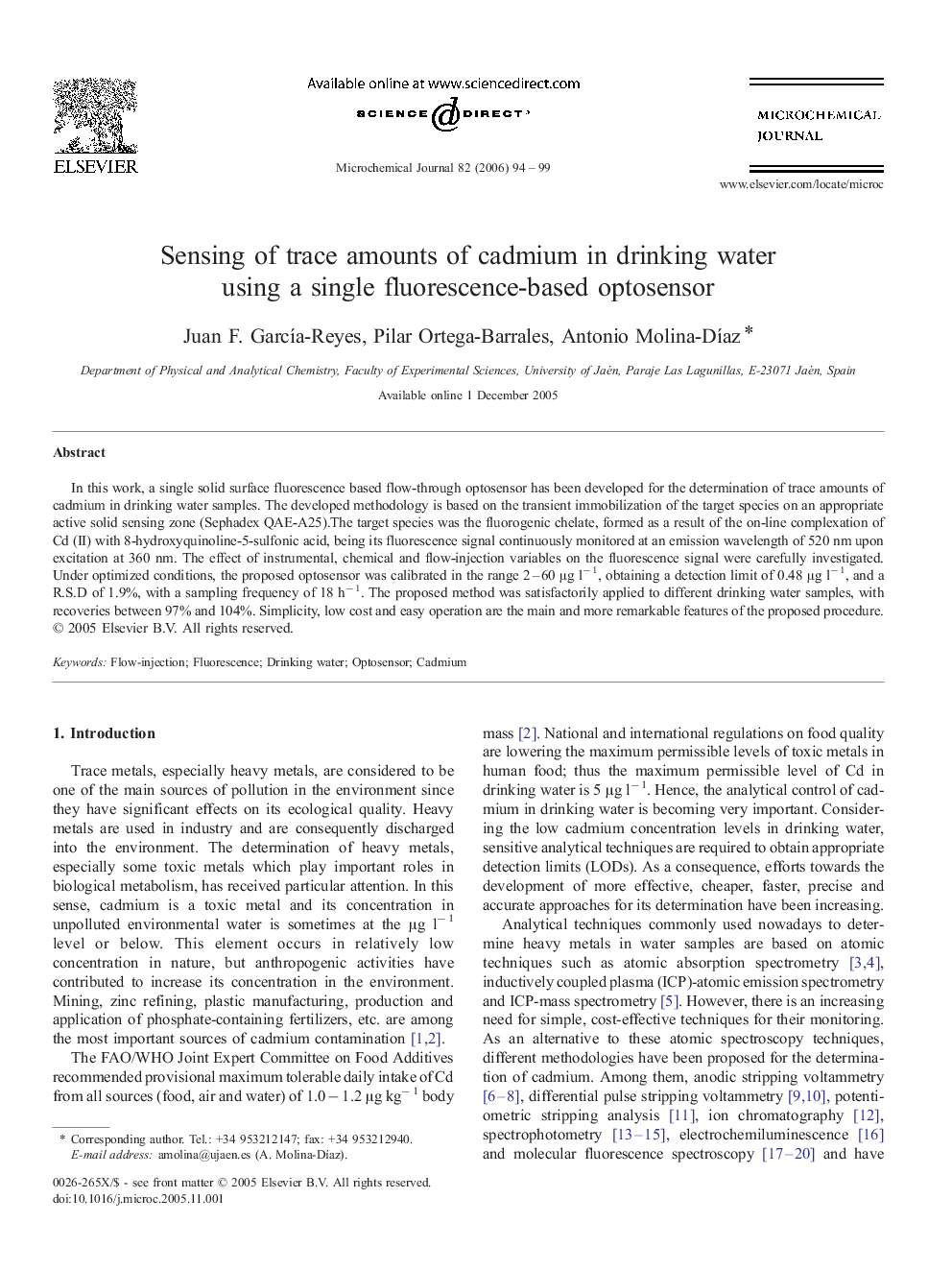| Article ID | Journal | Published Year | Pages | File Type |
|---|---|---|---|---|
| 1228511 | Microchemical Journal | 2006 | 6 Pages |
In this work, a single solid surface fluorescence based flow-through optosensor has been developed for the determination of trace amounts of cadmium in drinking water samples. The developed methodology is based on the transient immobilization of the target species on an appropriate active solid sensing zone (Sephadex QAE-A25).The target species was the fluorogenic chelate, formed as a result of the on-line complexation of Cd (II) with 8-hydroxyquinoline-5-sulfonic acid, being its fluorescence signal continuously monitored at an emission wavelength of 520 nm upon excitation at 360 nm. The effect of instrumental, chemical and flow-injection variables on the fluorescence signal were carefully investigated. Under optimized conditions, the proposed optosensor was calibrated in the range 2–60 μg l− 1, obtaining a detection limit of 0.48 μg l− 1, and a R.S.D of 1.9%, with a sampling frequency of 18 h− 1. The proposed method was satisfactorily applied to different drinking water samples, with recoveries between 97% and 104%. Simplicity, low cost and easy operation are the main and more remarkable features of the proposed procedure.
